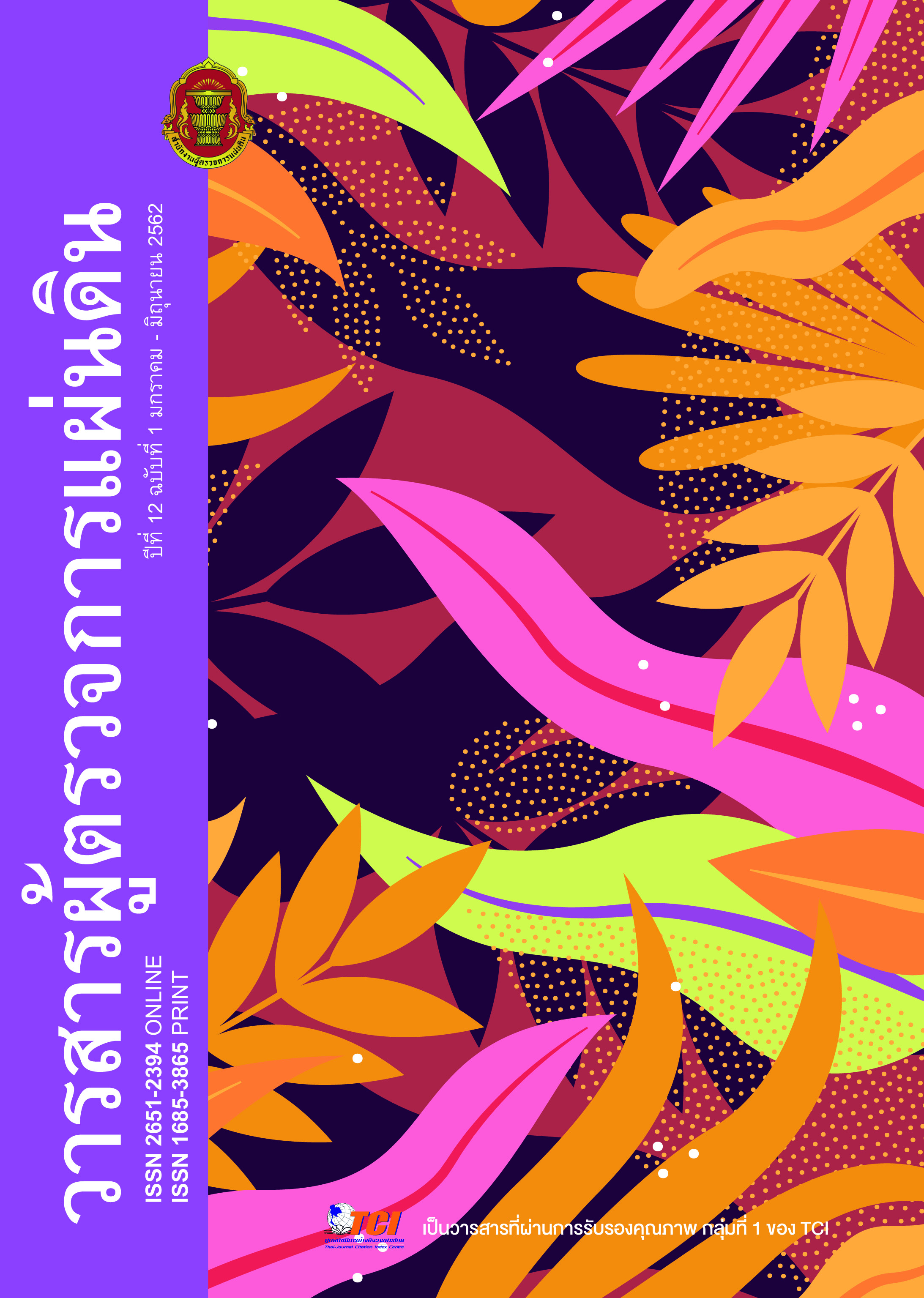Creating a Model for the Process to Developing the Elderly Care System between the Administrative and the Elderly: A Case Study of Ban Yang Subdistrict Administrative Organization, Muang District, Buriram Province
Keywords:
The process of developing the elderly care, SIPOC Model, Elderly, AdministrationAbstract
This research article has been based on “Mixed Methodology Research” between the qualitative research and the quantitative research to bring quantifiable results to support qualitative research with by the theory of law, the strategic and policy with SIPOC Model. This research finds to creating a model process to develop ageing care and synthetic the direction of development in accordance with the social conditions by evaluating the performance, form and process according to the structure, the development of the elderly care system of Ban Yang Subdistrict Administration Organization. The study found that the development process of the elderly system in each area is different. The administrative department must bring the SIPOC Model to create a relationship between the government as suppliers and the elderly as customers (Customers) in order to achieve the goals in terms of effectiveness and efficiency of the development process of ageing care. The administration needs to focus on 5 aspects are 1) S–Supplier are the administration have the authority for providing public services, expanding networks and sources of funding operations. 2) I–Input, the administration should update the database of ageing. 3) P–Process, the administration should focus on policies and strategic action plans. 4) O–Output, the administration should create the ageing’s project with consistent provincial and national policies. 5) C–Customer are the ageing people. The administration must provide good service.
The suggestions for this research on 3 aspects are 1) for the administration mean the subdistrict administration organization (SAO) 2) for the administration to provide grants 3) for the government. Finally, the elderly community will be developed to align with the context of Thai society, which is fast becoming an elderly society, by creating a system of safety nets that protect the elderly on economic and social levels, such as saving accounts and jobs for the elderly, which can be achieved by the introducing government regulations, to set precedents for other government entities, which corresponds with the principle of the rule of law.
References
Ageing Asia Organization. (2017, April 3). Ageing population in Thailand. Retrieved Febuary11, 2018 from http://ageingasia.org.
Department of Older Persons. (2017). Nayōbāi Ratthabān Dān Phū Sūngʻāyu. Retrieved Febuary 11, 2018 from http://www.dop.go.th.
Department of Public Welfare, Ministry of Labor. (1999). Patinyā Phū Sūngʻāyu Thai. Retrieved Febuary 15, 2018 from http://www.dop.go.th.
Jiro Okochi. (2005). Increase of mild disability in Japanese elders: A seven year follow-up cohort study. Retrieved Febuary 11, 2018 from https://www.researchgate.net.
National Institute Ageing. (2017, April 7). World’s older population grows dramatically. Retrieved March 11, 2018 from https://www.nia.nih.gov.
Porametee Vimolsiri. (2016). ʻēkkasān prakō̜p kān banyāi rư̄ang yutthasāt chāt sō̜ng sū pī ʻanākhot prathēt Thai phư̄a khwāmmankhong mangkhang yangyư̄n. Na hō̜ng prachum sathāban witthayākān prakanphai radap sūng chan sō̜ng samnakngān คปภ. . Krung Thēp Mahā Nakhō̜n.
Sasiphat Yordpret. (2017). Bō̜rikān Thō̜ngthin Phư̄a Kān Plīanplǣng Thī dī Samrap Phū sūngʻāyu. Krung Thēp Mahā Nakhō̜n: sathāban phrapokklao .
Sirinan Kittisuksathit, et al. (2014). Khunnaphāp Chīwit Kānthamngān læ Khwām Suk Nai Khrōngkān čhaptā Sathānakān Khwām Suk Khō̜ng Khon Ngān Nai Prathēt Thai. Sathāban Wičhai Prachākō̜n læ Sangkhom Mahāwitthayālai Mahidon . Nakhō̜n Pathom.
SomSak Chunharat. (2017). Bot thī Nưng Sakkayaphāp ʻOngkō̜n Pokkhrō̜ng Sūan Thō̜ngthin Kap Kānphatthanā Khunnaphāp Chīwit Phū sūngʻāyu. Retrieved March 11, 2018 from http://thaitgri.org.
Supachai Muangrak. (2017, August 28). Lakkān Phatthanā ʻOngkō̜n sū Khwāmpen lœ̄t Tām Nǣothāng Kānbō̜rihān čhatkān Phāk Rat ( PMQA). Sathāban Phœ̄m Phonphalit Hǣng Chāt .
UNESCO. (1978). Indicators of Environmental Quality and Quality of Life. Paris: UNESCO.
United Nations. (2015). World Population Ageing 2015. New York: United Nations.
Downloads
Published
How to Cite
Issue
Section
License
- Content published in the journal is personal opinions of authors which the office of Ombudsman and the editorial team are not bound to be accordance with.
- Articles, content, images, etc. published in the Journal of Ombudsman are copyright of the Journal. If any person or entity wants to bring all or part of it to publish or to do any action. Must obtain written permission from the journal's first.



